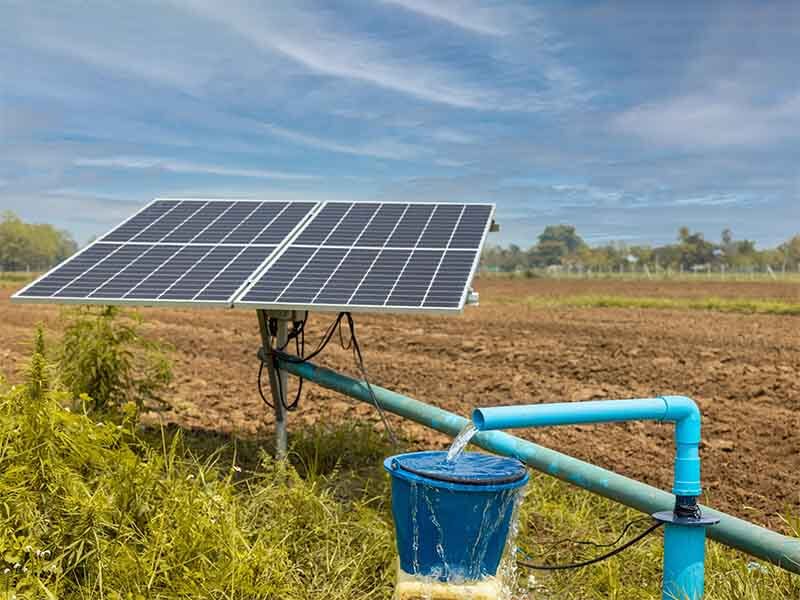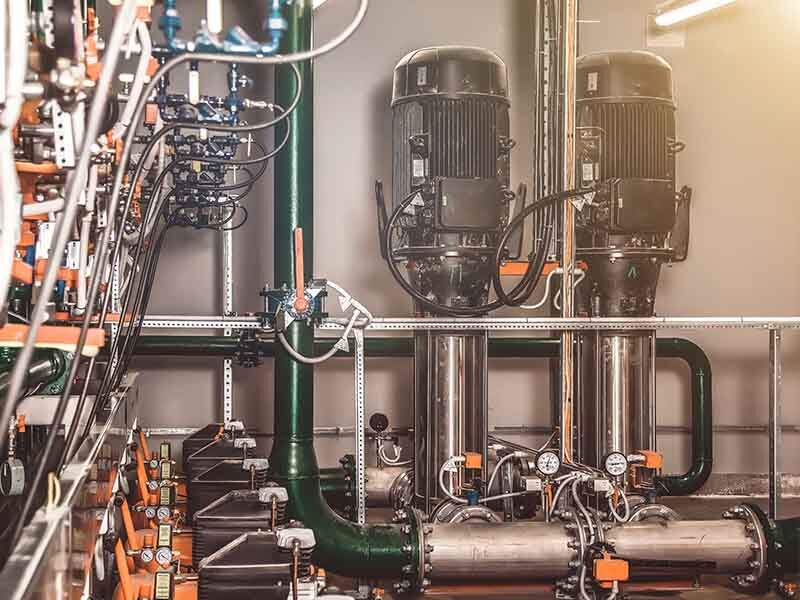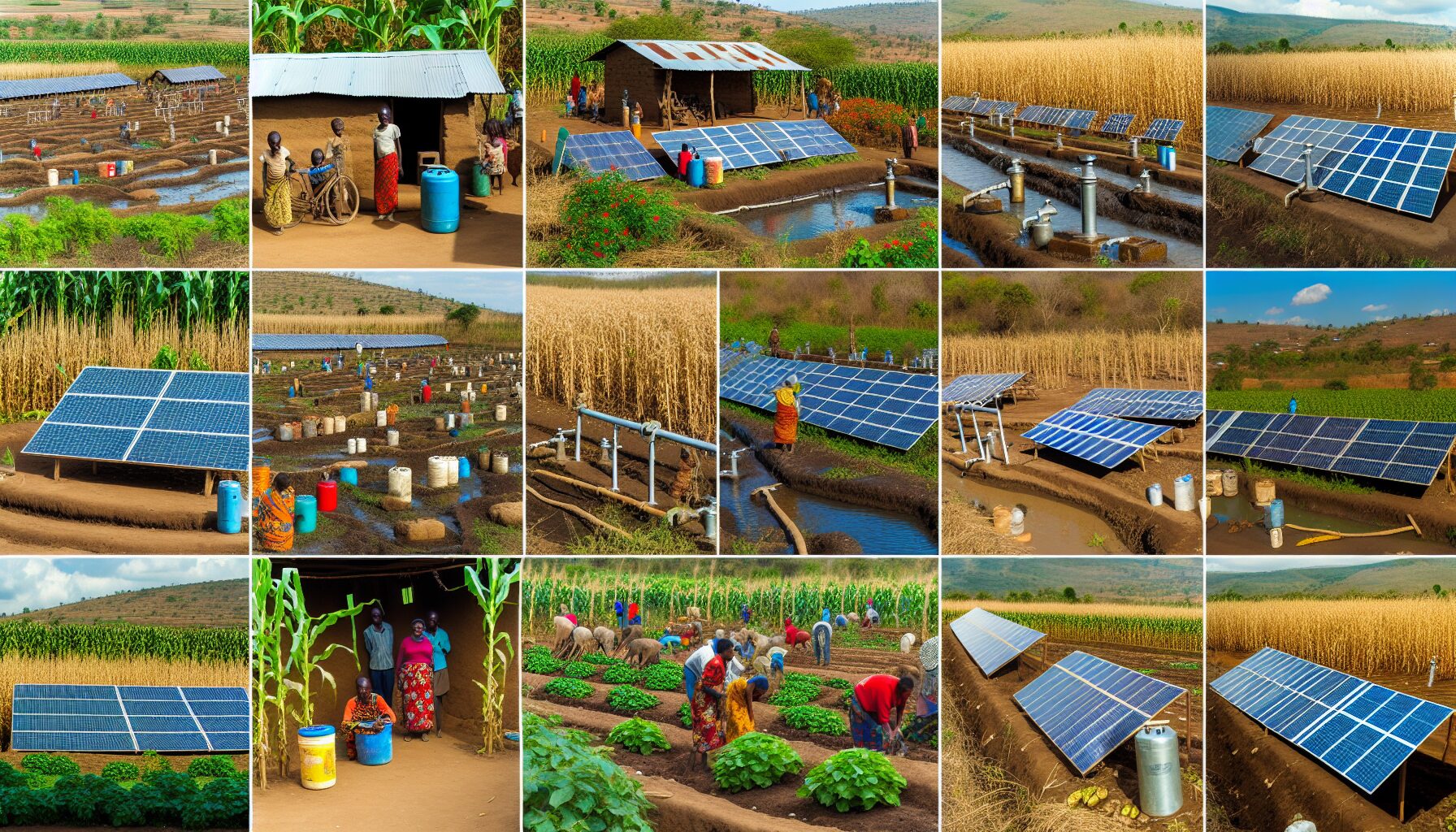
In the realm of agriculture, one of the most significant challenges farmers face is managing water use, particularly in regions plagued by water scarcity. The key to combating this issue lies in the utilization of solar water pumps for Farming. These innovative devices harness the power of the sun, converting it into energy to pump water for irrigation. As a result, they offer a sustainable and cost-effective solution, transforming the way farmers manage water resources and ultimately, their agricultural practices.
Imagine a world where reliance on fossil fuels for water pumping is a thing of the past, replaced instead by the limitless and clean energy of the sun. Solar water pumps for Farming bring us one step closer to this reality, promoting sustainable farming and ensuring the reliable supply of water for crops.
Solar water pumps are an eco-friendly watering solution in Farming, converting solar power into electricity to pump water from various sources, offering significant cost savings, and reducing carbon emissions.
When adopting a solar water pump, farmers should closely assess pump power rating, head, and flow rate to select a system tailored to their farm’s specific watering needs and consider the impact of pump depth on water discharge rate.
The economic benefits of solar-powered irrigation systems include long-term cost-effectiveness due to fuel and maintenance savings, with an ROI that can range from substantial monthly savings to a payback period of several months to a few years.

So, what exactly are solar water pumps, and how do they operate? These devices are key in agricultural activities, aiding in the pumping of irrigation water for crop cultivation. Powered by solar panels that capture and convert sunlight into electricity, solar water pumps extract water from sources such as borehole wells, rivers, or dams, and distribute it to the fields for watering. The use of a pump and water tank in conjunction with the solar water pump allows for water storage, optimizing usage for later use.
A typical solar water pumping solution encompasses:
Solar panels for capturing solar energy
Submersible or surface pumps for water extraction
Installation accessories
Solar pump inverter for converting energy for pump operation
However, like any technology, solar water pumps have their limitations. Their reliance on sunlight for operation means they are unable to pump water during periods of insufficient sunlight, such as at night or during very cloudy weather. But don’t let this deter you. The advantages of these pumps significantly exceed their limitations, as will be evident in the subsequent subsections.
Solar pumps offer several compelling advantages that make them an attractive choice for modern farming. The financial benefits are particularly striking. Elimination of fuel costs by solar water pumps results in substantial cost savings over time. Combining a water tank with a solar water pump can further optimize water usage, contributing to these savings.
But the benefits don’t end with cost savings. The design of solar water pumps is relatively simple, with fewer moving parts compared to traditional pumps. This results in fewer instances of malfunctions and decreased repair expenses, making them an ideal choice for various agricultural settings, including fruit farms.
Furthermore, solar water pumps are eco-friendly. Their emission-free operation and low carbon footprint make them a sustainable energy option that does not contribute to climate change, unlike traditional fossil-fueled pumps.
When choosing a solar pump, there are several factors to consider. These include:
The pump’s power rating
The head (vertical distance the pump can propel water)
The flow rate (quantity of water it can transport under specific pressure)
These specifications significantly influence the pump’s efficiency, dictating the amount of water that can be delivered to the surface from different depths, a critical aspect for efficient farm watering.
A key relationship to understand is the inverse correlation between the discharge rate and the pumping depth in solar water pumps. The volume of water discharged decreases as the pumping depth increases. Considering the correlation between pumping depth and water discharge is key, thus making it imperative to select a pump with the suitable capacity for your farm’s irrigation needs, whether it’s a modest one-acre farm or a more extensive agricultural operation.
Finally, the number of solar panels needed for your pump is a critical consideration. This is determined based on the power rating of the pump’s motor, ensuring that the energy needs of the pump align with the output capacity of the solar panels for optimal operational efficiency. This is an important consideration when planning the full setup of a solar water pump system for agricultural use.

One of the most notable benefits of solar-powered irrigation systems is their ability to enhance water use efficiency. By providing a dependable water source and minimizing water wastage and energy expenses, these systems can prolong the growing period and enhance income opportunities for farmers. But how exactly do solar water pump systems contribute to water conservation?
Solar water pump systems offer several benefits:
They harness solar energy to operate the pumps, decreasing reliance on conventional electricity sources.
They can be integrated with drip irrigation systems to enhance water efficiency by supplying water directly to plant roots.
This precise and consistent watering supply reduces water waste.
They promote environmental sustainability through the use of clean, renewable energy.
In addition, the integration of solar pumps with smart farming techniques optimizes water usage by facilitating efficient water pumping for watering, decreasing manual labor and overall water consumption, and enhancing farming operational efficiency. This optimization is further enhanced by tailoring the pump systems to the specific needs of the crops and integrating the systems with drip irrigation, as discussed in the following subsections.
The water requirements for different crops are influenced by a variety of factors such as:
the crop’s growth stage
climate conditions
soil type
temperature
humidity
sunshine
For instance, increased evaporation in warm climates and certain growth stages may necessitate more water. Accordingly, it is important to tailor solar pump systems based on these varied crop requirements to ensure efficient water utilization and heighten agricultural productivity.
Solar pump systems can be tailored to meet these diverse needs by harnessing solar energy to operate water pumps for irrigation, livestock watering, and crop spraying, effectively pumping water as needed. This allows farmers to adjust water supply according to factors such as local climate conditions, crop types, and seasonal variations, providing an economical and environmentally friendly solution.
Furthermore, solar pump systems can adjust their pumping rates and operation duration to meet the changing water needs of crops throughout different seasons, responding appropriately to seasonal and climatic conditions.
Pairing solar pumps with drip irrigation systems can further boost water efficiency and crop development. A solar-powered drip irrigation system operates by harnessing solar energy to power a water pump. Solar cells on the pump capture sunlight and transform it into electricity, which in turn drives the pump to supply water directly to the drip watering system. This method ensures precise delivery of water to the crop roots, minimizing water wastage and optimizing overall efficiency.
The integration of a solar water pump with a drip irrigation system involves the following steps:
Connect the drip hoses to the solar water pump.
Ensure that the pump provides sufficient pressure for the drip irrigation system.
Install a filter to prevent clogging of the drip hoses.
Set up an automated timer or controller to regulate the watering schedule.
Adjust the flow rate of the water pump to meet the specific water needs of the crops.
This integration is aimed at enhancing water and nutrient-use efficiency and increasing crop productivity.
Regardless of the higher initial costs, solar water pumps can offer enduring financial benefits for farmers. It might seem counterintuitive, given the high initial investment required for these systems. However, when you consider the long-term cost-effectiveness, the economic case for solar pumps becomes clear.
Solar pumps can be cost-effective in the long run due to the absence of ongoing fuel costs, extended pump lifespans, and minimal labor and maintenance expenses. Not to mention, the cost of solar is experiencing a downward trend, while the price of petrol is increasing, making solar a more financially feasible choice in the long run. The ongoing costs of solar-powered irrigation are generally lower compared to traditional systems, due to reduced reliance on grid electricity or fossil fuels, resulting in lower water pumping costs.
We will delve deeper into the costs, savings, and return on investment (ROI) calculations associated with solar water pumps in the subsequent subsections.
When contemplating the financial implications of implementing solar water pumps, it’s important to comprehend both the initial investment and the potential savings. The typical expenditure for a solar water pump for agricultural use in Kenya varies from less than Ksh 25,000 to approximately Ksh 200,000, dependent on the particular needs and capacity of the pump. While this may seem steep, the long-term savings can offset these initial costs.
Transitioning to solar pumps can result in the following benefits for farmers:
Fuel cost savings ranging from 20 to 50 percent
Reduced maintenance requirements, leading to long-term cost savings
Avoidance of high maintenance costs for traditional water pumps (approximately $2,500 per repair)
Reduction in additional expenses like lost production or environmental clean-up
The actual savings and benefits will be influenced by variables such as local fuel prices and individual pump usage.
Before making the decision to invest in a solar water pump, farmers should consider the following:
The duration they desire from a water pump
Analyze the ongoing expenses of fuel and maintenance over that timeframe
Compare it to the initial investment in a solar water pump
Calculating the return on investment (ROI) of solar water pumps can provide a clearer picture of their long-term financial benefits. The ROI is calculated by:
Comparing the initial installation cost of the system with the monthly savings obtained from utilizing solar energy in place of conventional energy sources.
Adding up the total value of the savings throughout the system’s lifespan.
Dividing the total savings by the initial installation cost to ascertain the ROI.
Key determinants impacting the ROI for solar water pumps in agricultural operations encompass economic viability, access to financial resources, and the potential increase in production and income facilitated by irrigation. Research indicates that the ROI for farmers utilizing solar water pumps typically falls within the range of approximately 26% to a payback period of 6 months to 3 years.

For peak performance and longevity of solar water pumps, appropriate installation and maintenance are key. However, during the installation process, typical challenges that may arise include:
Inconsistent water flow due to tilt angle
Low water production
Continuous water running
Malfunctions with low well sensor
Damaged pumping components
Inefficient hot water production
Fluid leakage
Pump and circulation challenges
Unusual pump noise
Issues with solar pump inverters
Addressing these challenges involves:
Ensuring the proper tilt angle for consistent water flow
Checking for correct pump installation and sensor placement
Testing the system for efficient water and hot water production
Inspecting for leaks
Ensuring no unusual noise is present
Verifying that the pump and inverter are functioning correctly.
Routine maintenance is also vital for ensuring the optimal performance of a solar water pump. The necessary routine maintenance procedures include regular checks and cleaning of pump filters, as well as clearing bushes around solar panels to ensure unobstructed sunlight. To promote a prolonged operational lifespan, diligent maintenance activities such as clearing debris from filters, ensuring unobstructed sunlight for solar panels, and regularly inspecting the system for signs of wear or malfunction are recommended.
When setting up a solar water pump, it’s vital to select the right pump for your specific needs. This involves:
Analyzing the borehole well test pumping report
Selecting a pump that aligns with the recommended dynamic head and flow rate
Verifying its compatibility with the pump setting depth specified in the report
Next, measure the depth for setting up the solar water pump. This includes determining the well depth, well diameter, water level, dynamic water level, and water output. Additionally, consider the appropriate cables for the pump, taking into account the voltage rating, current carrying capacity, cable size, insulation and protection, and durability.
Finally, calculate the appropriate number of solar panels needed for your pump based on the power rating of the pump’s motor, ensuring that the energy needs of the pump align with the output capacity of the solar panels for optimal operational efficiency.
Routine upkeep is vital for maintaining peak performance of a solar water pump. Establishing an easy maintenance schedule based on the manufacturer’s recommendations and the specific requirements of the pump helps to maintain peak efficiency and prevent issues caused by dust, dirt, and debris accumulation.
Recommended maintenance for solar water pumps involves regular inspection and cleaning, leak detection, lubrication, pressure and flow monitoring, and ensuring water quality. The solar panels should be cleaned with soap and water every few years, and thorough inspection of the pump motor and battery is essential. It is also important to thoroughly examine the system for any indications of damage or wear. If any issues arise, such as slow water flow, pump failure or malfunction, low water production, and continuous water running, troubleshooting steps may involve examining the tilt angle of solar panels, cleaning them, inspecting for loose connections, clogs, or blockages, and adjusting the pressure switch settings.

Practical examples offer the most persuasive proof of the transformational potential of solar water pumps. From smallholder farms achieving self-sufficiency to large agribusinesses cutting costs and reducing their carbon footprint, these case studies are a testament to the transformative power of solar water pumps.
One such example can be seen in the Dhundi village in Gujarat, where farmers witnessed augmented incomes and decreased emissions, and the Rewari district in Haryana, which demonstrated the sustainable deployment of solar water pumps. Similarly, solar water pumps have had a significant impact on improving self-sufficiency in smallholder farms. This is achieved by:
Eliminating high maintenance costs
Avoiding the risk of electrical wiring failures
Reducing the overall price of investment for farmers
Ultimately leading to increased productivity.
Large agribusinesses have also reaped the benefits of solar water pumps. They have observed a range of advantages from the adoption of these pumps, such as:
Cost savings
Heightened productivity
Improved climate resilience
Enhanced water security
Furthermore, solar water pumps contribute to the reduction of the agricultural carbon footprint by replacing fossil fuel-powered pumps with zero-emission alternatives. This promotes sustainable agriculture by reducing the environmental impact of farming practices and contributes to a decrease in greenhouse gas emissions.
Many small farms have experienced positive outcomes from utilizing solar water pumps. The Titukuke Scheme in Mkulira village, Mwanza, Malawi; a farmer named Peter in Nakuru, Kenya; and smallholder farmers in Niger serve as excellent illustrations of the successful implementation of solar water pumps on small farms, resulting in increased productivity and sustainability.
Solar water pumps contribute to self-sufficiency in smallholder farms by:
Minimizing the labor and time required for irrigation
Reducing maintenance costs and the risk of electrical failures
Decreasing the initial investment for farmers
Utilizing clean energy, reducing dependence on fossil fuels and mitigating greenhouse gas emissions
These pumps have had a substantial effect on reducing operational costs for small farms, including fruit farm operations, resulting in improved productivity and profitability.
Moreover, they play a role in supporting food production, promoting better nutrition, and facilitating the adoption of sustainable practices and technologies, thereby contributing to economic development.
Large agribusinesses have also experienced the transformative power of solar water pumps. By decreasing operational costs related to irrigation and energy, and reducing reliance on fuel, these pumps enable businesses to benefit from economies of scale and effectively utilize solar energy. Transitioning to solar-powered irrigation systems significantly reduces carbon emissions in comparison to conventional diesel-powered pumps, as large farms have reported potential carbon emissions savings of up to 95% per unit of energy used for water pumping.
There are several notable examples of large-scale farms that have implemented solar-powered irrigation systems, such as:
The DREAM Initiative in Africa
The Niger Solar Electricity Access project
Instances of solar-powered drip irrigation in West Africa
The use by smallholder farmers in Ghana
These examples demonstrate the widespread adoption of solar irrigation across different scales of operation and regions.
In conclusion, solar water pumps present a powerful solution for addressing the challenges of water management in agriculture. By harnessing the power of the sun, these innovative devices provide a sustainable, cost-effective way to pump water for irrigation. Despite their higher upfront costs, the long-term financial benefits and environmental impact make them an attractive choice for modern farming.
Whether you’re a smallholder farmer seeking self-sufficiency or a large agribusiness aiming to cut costs and reduce your carbon footprint, solar water pumps can transform your agricultural practices. They offer a promising path towards sustainable farming, optimized water usage, and improved crop yields. So, why wait? Harness the power of the sun and fuel greener farming with solar water pumps.
Jain Irrigation Systems Ltd. offers a wide range of solar water pumps suitable for irrigating crops, making them a top choice for agricultural use.
The cost of solar pumps in Kenya varies depending on the size and capacity, ranging from around $500 to $5000.
To run a water pump, the number of solar panels needed depends on the pump’s horsepower. For example, a 1/2 HP pump requires 2 solar panels (100W each), while a 5 HP pump may need around 20 solar panels.
Solar water pumps work by using solar energy to power the extraction of water from various sources and distributing it for irrigation. This is done through the combination of solar panels, pumps, and a solar pump inverter.
Solar water pumps offer multiple benefits in agriculture, such as eliminating fuel costs, requiring low maintenance, and being environmentally friendly with emission-free operation and a low carbon footprint. These factors make them a practical and sustainable choice for agricultural water supply.
